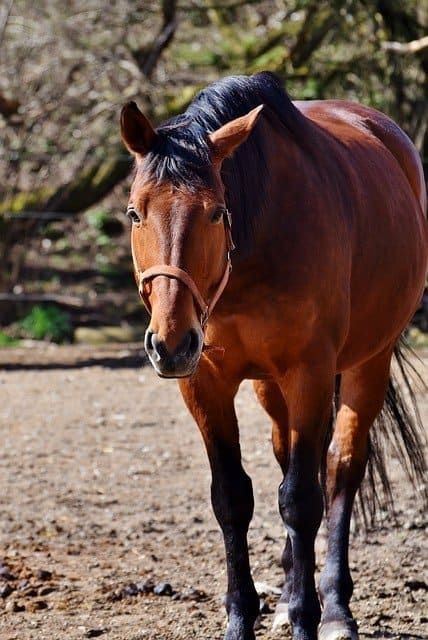
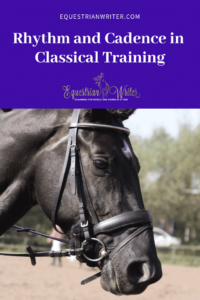
The concept of rhythm was briefly touched upon in my article on the Classical Training Pyramid. However, this deserves a more in depth discussion as as rhythm — or takt as it is known in the classical tradition — is the foundation for collection.
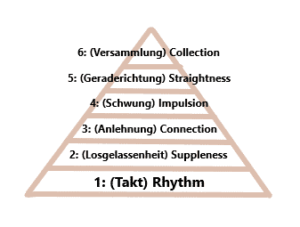
This concept is a vital foundation for any ridden horse. Establishing a consistent rhythm and cadence allows the rider to move with the horse. If you cannot predict the rhythm of the horse’s stride, you cannot effective ride in sync with the horse’s gait. This causes you to jar the horse’s back, further hindering rhythm and preventing the horse from softening and become supple enough to achieve true collection. Every step of the training pyramid depends on the rider being able to effectively move in unison with the horse.
What is Rhythm?
Rhythm refers to the time between footfalls in the horse’s stride and is a vital foundation for any ridden horse as it is essential for balance and cadence. Cadence, on the other hand, is the animation within the strides. Don’t confuse cadence with speed. It is not about how fast the feet are moving. Every gait has a moment of suspension. The longer that moment of suspension is, the better the cadence is.
A horse that is poking along slower than a lame snail is not going to have good rhythm or cadence. Forward momentum is vital to rhythm and cadence. However, it is important to remember that, while you want the horse moving forward, it’s not a race. It’s about quality of movement, not speed. One horse’s optimal rhythm may be faster or slower than another’s.
Prerequisites to Rhythm
The only prerequisite for rhythm is calmness. Your horse need not even be saddle broke as rhythm is something you can start establishing on the lunge before the horse ever has a rider on his back. However, your horse does need to be calm enough to think clearly and move with purpose. A horse that is extremely stressed with his head way up in the air cannot think straight or move efficiently enough to achieve consistent rhythm.
Related: 3 Exercises Every Horse Needs to Know (Part 1): Lunging
Establishing Rhythm (Takt)
The Forward Horse
This is often easiest to start out on the lunge at the walk for many horses. Depending how forward your horse is, he will need some time to settle down into the walk. Never try to force the horse to walk. This will only create tension and resistance. As long as he is not running like a maniac and putting you or himself in danger, just let him work the kinks out.
Once you establish a walk, let him set the pace. Remember, this is about rhythm and cadence, not speed. Once horse’s natural walk may be faster or slower than another’s. Let him pick his own speed where he is comfortable. Once he finds a speed where he is comfortable, start watching his feet and how he is tracking up. His hind foot should be landing in or near the hoof print of his front foot. Tracking up is a combination of relaxation over the topline and forward momentum.
Lunging is about rhythm and cadence, not speed.
Tweet
In both the Mechanics of Lateral Flexion and Anatomy of Collection articles, we discussed how the brachiocephalicus muscle (lower neck muscle) engages when the neck comes up above horizontal. If the horse’s head is too far up, the back hollows, causing the supraspinous ligament to shorten. Shortening the supraspinous ligament limits the range of motion of the horse’s hindquarters, preventing his hind legs from reaching up under him and tracking up properly. This results in short, choppy strides with uneven rhythm and poor cadence.
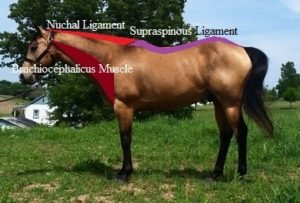
The Lazy Horse
The mechanics are the same for the lazy horse. The difference being a lazy horse will have much less forward momentum to work with, which makes things harder as you are constantly trying to get him to extend his stride and track up properly. However, there is less chance of having the horse constantly throwing his head in the air and hollowing his back. So, there is a give and take.
A lazy horse is more likely to hollow his back while dropping his head and shuffling along with short, choppy strides. Yes, it is possible for the horse’s head to be down and the back to be hollow at the same time. This is why forcing the head down doesn’t work. Putting the head down isn’t what brings the back up. Putting the head down unlocks the top line and allows the back to come up. Tracking up is what lifts the back. A horse can be hollow with its head down. But, I have never seen a horse completely hollow while tracking up properly. Now, that is not to say that getting your horse to track up lifts the back and solves all your problems. This is just the foundation.
Keys to Success
1. Start without the saddle
Starting on the lunge without the saddle has two main benefits. First, it allows you an unobstructed view of the horse’s back from the ground so it is easy to see if the back is lifted. Secondly, it allows the horse to learn to lift his back without the weight of the saddle and rider to hinder him. Asking a horse with an undeveloped back to lift a saddle and a rider is like taking an out of shape person to the gym and expecting them to lift weights like a trained body builder. It’s unreasonable, extremely difficult, and possibly detrimental to the athelete’s health and well being. It is always better to start slow and gradually build up to adding weight. Once the horse is good at lifting their back with nothing on their back, then add just a saddle on the lunge. Once they can handle that, you can add a rider for short periods of time.
2. Don’t let him associate lunging with exhaustion
If his is very sweaty and tired, you may want to call it quits for the day once he reaches a calm walk and come back tomorrow. You will find that every time you do this he will come down to a relaxed walk quicker. You do not want him to associate rhythm work with tired, sore muscles. Do not pick at his rhythm until he comes down to a walk calmly without working up a sweat and tiring himself out before hand.
Cover Photo by Capri23auto
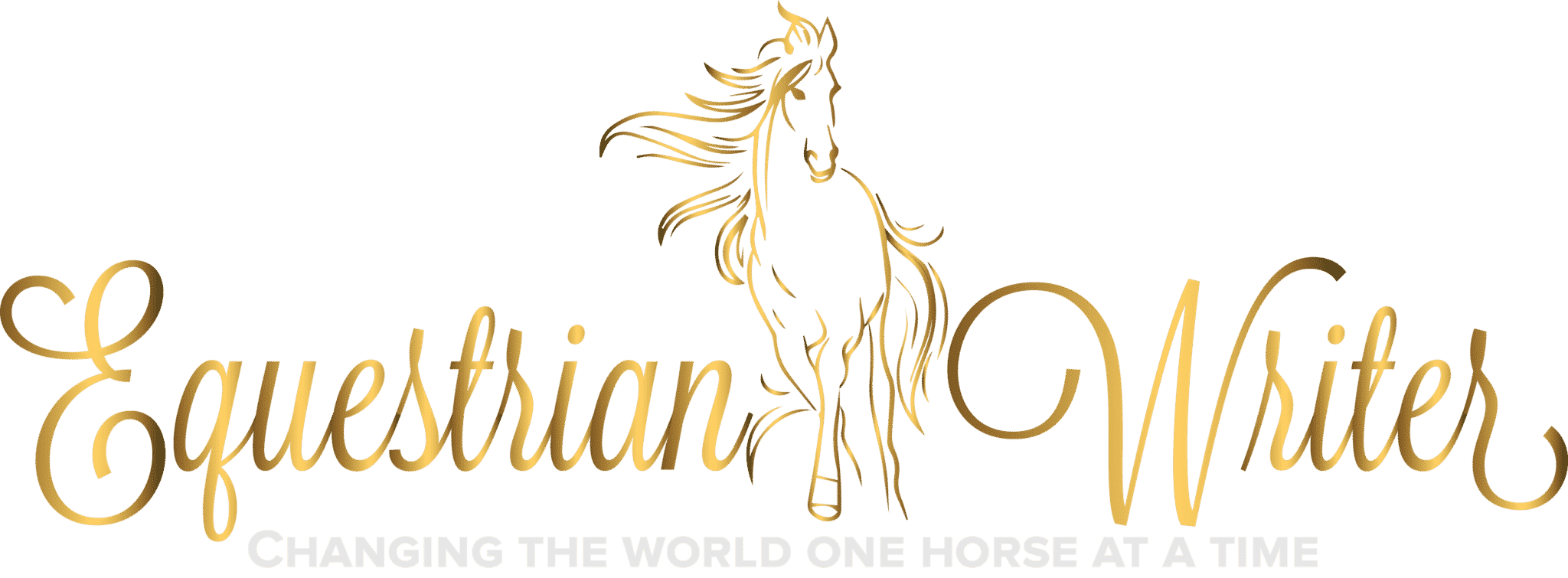





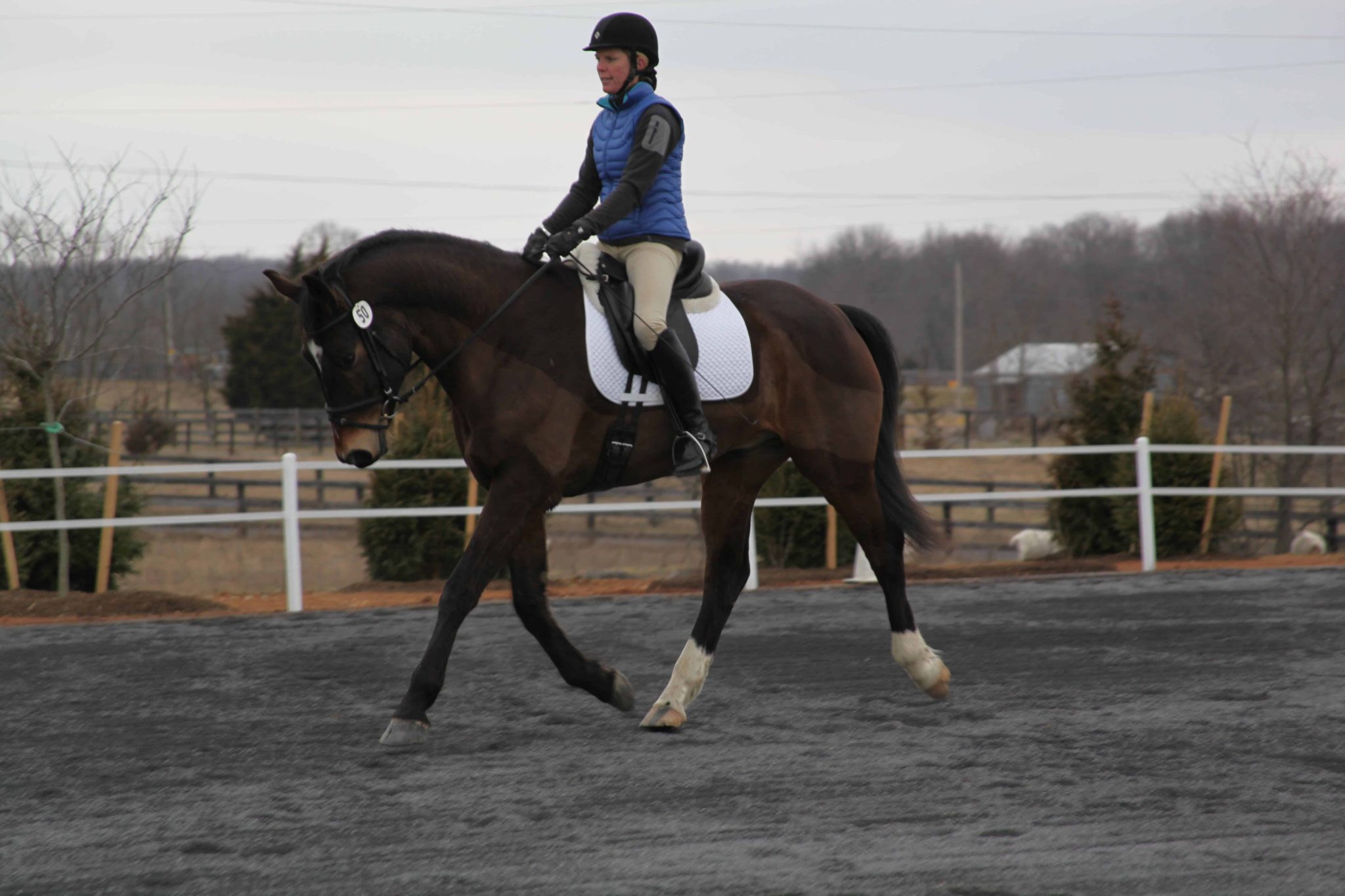
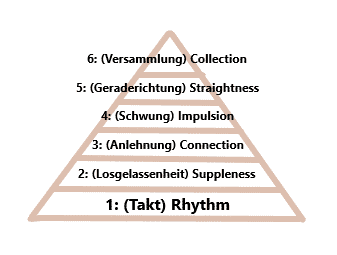
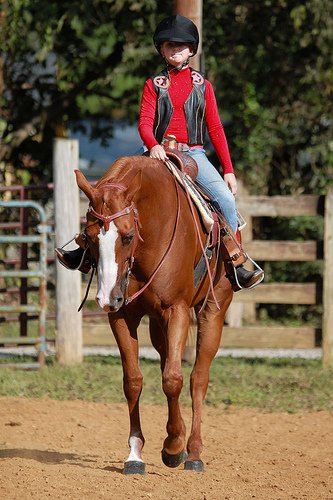

Wow, what a great way to put things! I rode (English) a horse with a hollowed back for so long as I couldn’t figure him out! He now lifts his back and lowers his head. It’s so weird, I used to think English and western were very different but they both use the same techniques!
Thank you. Glad you found it helpful. Yes, it is surprising when you break it down how similar the fundamentals really are. Some of the best western trainers actually have a foundation in classical dressage. It is just a very well kept secret of the industry. 80-90% of my western horse’s training is classical dressage. All of my formal training is dressage. I still consider myself a western rider and my mare a western horse. The western parts are really just set dressing. Neck reining, sliding stops, spins, and pretty much everything else can be ripped straight out of dressage with a few tweaks to make it western.